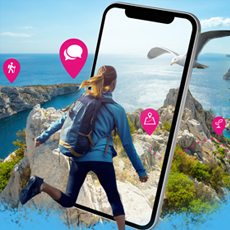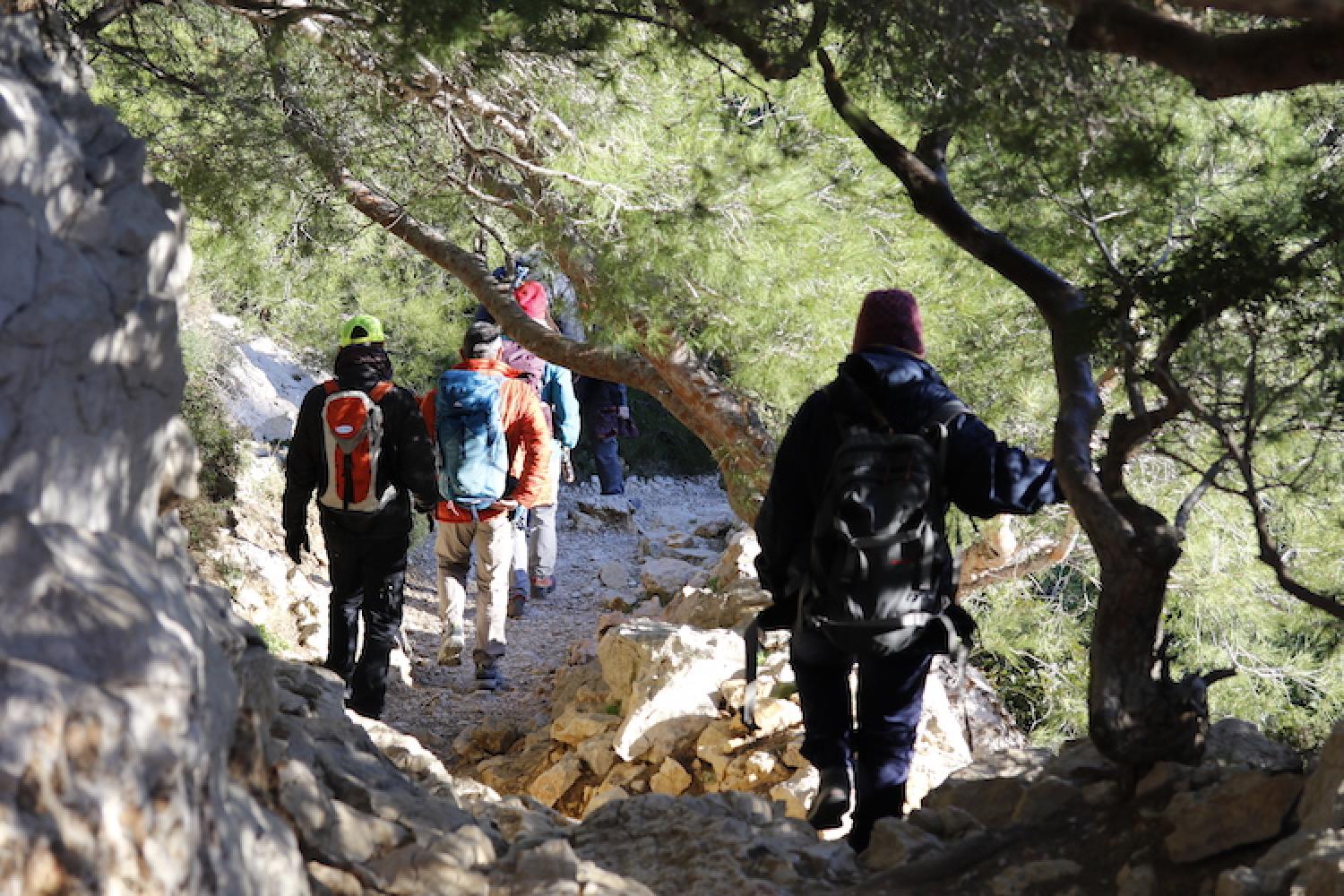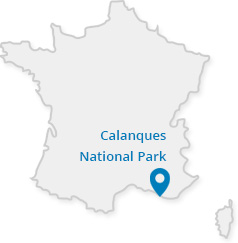Main regulations on land
The regulations are simple and based on common sense. They ensure that everyone can enjoy this majestic site. The following conduct is forbidden on land:
- smoking or lighting a fire,
- walking off the marked trails,
- creating noise pollution,
- disposing of waste - bring a bag and take your rubbish with you,
- damaging the site with graffiti, deteriorating the amenities, leaving waste,
- walking a dog without a leash,
- gathering flowers, damaging trees, and removing any flora or fauna except for authorised gathering of unprotected species for domestic, culinary, or medicinal use according to the national park charter and as explained in the My Calanques mobile app,
- disturbing and feeding local fauna,
- cycling in some parts of the national park, such as Luminy,
- driving a motorised vehicle off official roads,
- parking a motorised vehicle in a natural area,
- camping or caravaning,
- hunting outside authorised areas and during unauthorised periods,
- flying over the national park with drones or model planes.
Regulations for entering the national park
Between 1 June and 30 September, access to the Bouches-du-Rhône forests is regulated by official decrees to protect visitors and the environment from fire danger. Every day between 5pm and 6pm, officials assess and communicate the level of fire danger for the next day for each forest.
Before visiting, download the My Calanques app for live information and alerts about decisions to close access to the national park.
Or consult this map (call 0811.20.13.13: paid call €0.06 per min) for information about access to the Calanques National Park forests (Calanques, Cap Canaille, and Grand Caunet): authorised (green or yellow) or unauthorised (red). The map is updated at 6pm at the latest every day for the next day.
Red:
- Access by land to the Calanques National Park is unauthorised.
- The Route des Crêtes is closed.
- Boat tours are possible but landing is strictly forbidden.
- The Frioul archipelago is open to visitors.
Closing roads to the Calanques
Route Gaston Rébuffat for access to La Gardiole and the Route du cap Croisette: completely closed to motorised traffic.
Route des Crêtes: closed by default when the day is classified as red on Cap Canaille between 1 June and 1 September (see above) and when decided by emergency services in the event of extreme weather conditions. Download the My Calanques app to receive live alerts.
Routes de Sormiou, Morgiou and Callelongue: closed for the season as decided by the municipality of Marseille to allow clear access to emergency services. The roads are closed on the following dates in 2022:
- Every Saturday and Sunday and Public holidays (April 18 and May 26) from April 9 to June 1st April 7.00am to 7.00pm
- Everyday from from June 1st to September 30, from 7.00am to 7.00pm
Additional special regulations for certain areas
Frioul archipelago
Local bye-law dated 5 February 2021 regulating traffic and use of natural land in the Frioul archipelago. In addition to other general regulations applicable in the national park, the following are specifically banned:
- cycling, except in the village and on the road to Hôpital Caroline,
- climbing.
Riou archipelago
In addition to general regulations applicable in the national park, the following are specifically banned in the Riou archipelago:
- hunting,
- crafts, trades, and sales,
- people landing, passing through, or stopping, except between sunrise and sunset on the north-west and west coasts of Riou between the Monastério and Boulegeade Calanques,
- cars landing, driving and parking, and dogs,
- sports and tourist activities,
- climbing.
La Muraille de Chine
Vallon de Toulouse
Special regulations for outdoor sports and recreational activities
See the specific pages for regulations about different sports.
Authorisation requests
To protect the environment and preserve the character of the Calanques, certain activities require prior authorisation from the national park: public events, shooting image or recording sound for professional or commercial use, works, motorised flyovers, hunting, collection of samples from the natural environment and the introduction of plant and animals species.





